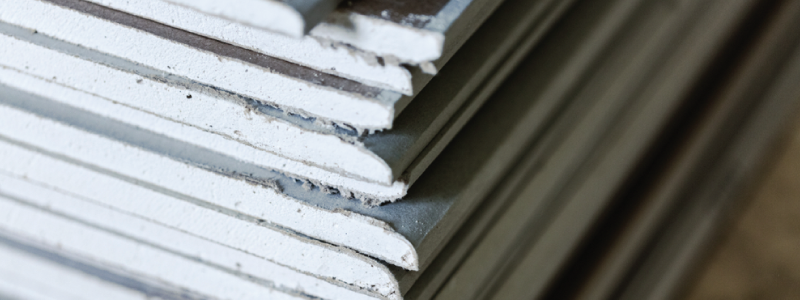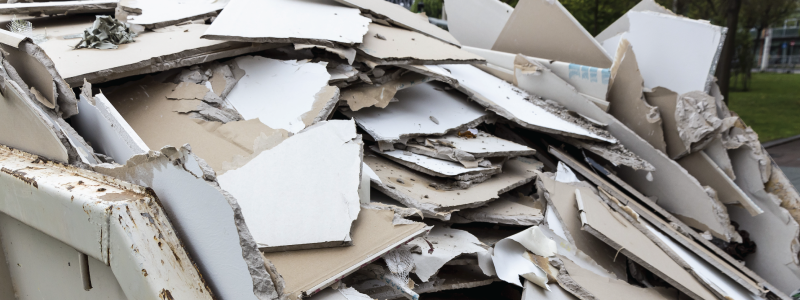
Why can’t you put plasterboard in a skip?
15th Oct, 2018
It’s a straightforward question with a not-quite-straightforward answer. The truth is that you can technically dispose of plasterboard in a skip. The trick is making sure you do it in the right way. Plasterboard is a prime example of the sort of material you can’t put in an uncovered skip, or in with mixed waste. There are lots of good reasons why these stipulations exist. They’re there to protect not just the environment, but also human health, too!
What is plasterboard and why is it so dangerous?
Plasterboard, sometimes known as drywall, is very distinct from other kinds of waste. It’s made from an inner layer of a mineral called gypsum, which is sandwiched between two outer layers of lining paper. It’s this layer of gypsum which makes plasterboard quite so hazardous, as it contains high levels of sulphates.

Now, we’ll spare you the detailed chemistry lesson, but the main danger arises from what happens when plasterboard gets wet – which is a very likely scenario in cases where it’s not disposed of carefully. If it gets damp when mixed in with general waste leachate on a landfill site, a process called putrefaction occurs, which produces a gas called hydrogen sulphide. If you’re not sure what that is, just trust us when we say it’s not stuff you want to be breathing in. Apart from anything else, it smells of rotten eggs!
In addition to that, though, it’s also corrosive and toxic, and heavier than air. This means it can collect in large pools in the environment, waste disposal sites, and the skip on your drive. In short, it creates a serious and perfectly avoidable risk to human health if it’s not disposed of correctly, which is why it’s important not to put it in an uncovered or mixed skip.
So how can you dispose of plasterboard?
Now, the good news is that this doesn’t mean plasterboard is impossible to dispose of. Far from it! One way to avoid the danger is simply to make sure that any skip containing gypsum is away from rain, standing water and any humid conditions where it could take on moisture.

Plus, you could potentially hire a skip for a day and fill it with only plasterboard, which is perfectly fine as long as stays segregated – in other words, as long as it doesn’t have any any other type of builder’s waste or similar mixed in with it. Of course, in most cases it’s unlikely that plasterboard will be the only thing you have to dispose of, so you’ll likely need to hire two skips separately: one for mixed waste and one for plasterboard.
Happily, we make things even easier for you here at Skip Hire Network, as we’re able to provide a specialised service for properly disposing of the material. Namely, we can offer enclosed skips to help keep plasterboard dry, sidestepping the most serious risks and allowing you to dispose of it safely. Just be sure to let us know in advance when you come to book your skip, and we’ll be able to provide a covered variant for you.
Of course, those rules aren’t quite as strict for all types of waste. With garden waste, household waste or most other builders waste, hiring a skip is absolutely the best option! If you’re unsure, you can always check out one of our previous articles to find out what you can put in a skip, or alternatively read this one to find out what you can’t. Once you’re sure of what goes where, you just need to put your postcode into the field on our homepage to find the cheapest skip hire prices near you!